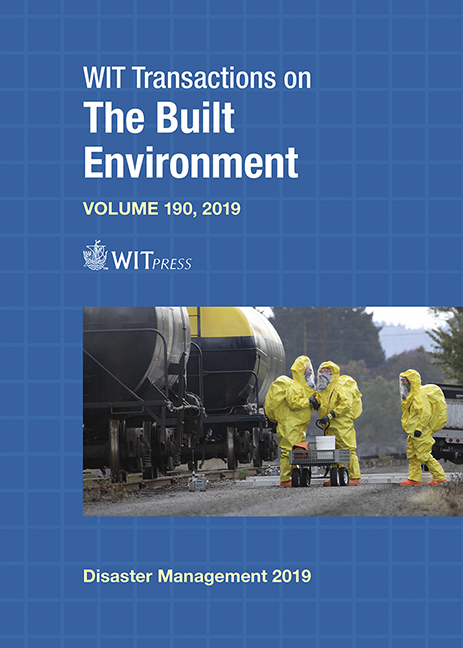INCORPORATING CLIMATE SCIENCE INTO DISASTER MANAGEMENT PROGRAMS
Price
Free (open access)
Transaction
Volume
190
Pages
11
Page Range
113 - 123
Published
2019
Size
244 kb
Paper DOI
10.2495/DMAN190101
Copyright
WIT Press
Author(s)
ELEONORE (NORA) D. YOTSOV, DOUGLAS C. STOLZ
Abstract
Human action (sometimes inaction) creates vulnerabilities that expose populations to impacts from disasters. The effects, especially those stemming from attributing factors such as climate change, are not often directly perceptible or understood in the context of disaster. These impacts are the most challenging to address and at the same time present an opportunity for increasing effectiveness of disaster risk reduction measures. There is much work to be done to reduce the gap between the science of climate change and disaster management. Such barriers to application include (but are not limited to) the nebulous nature of climate change itself, the perceived lack of value of prevention efforts through upfront investment and the burden whereby climate change and also the need to act now is fraught in partisan political process. There is a critical need to overcome these barriers, as the emergency response and recovery efforts are currently unable to keep up with increasing and ever worsening impacts from disasters. As humans develop and learn new information, there is often a delay between initial sense making and learning to acceptance and enculturation. There are four key steps for incorporating climate change science into the disaster risk reduction arena: 1) seek out unbiased scientific information; 2) understand the impacts and implications to develop accurate risk perception for the population; 3) reduce the existing gap by translating the science and engaging the appropriate stakeholders; and 4) apply this initiative through existing opportunities and innovations. Through history of the disaster management profession, the areas of concern expand as civilizations become more complex, interconnected and dependent on anthropogenic solutions. These impacts will only increase humanity’s actions (or inactions), augmenting collective exposure and vulnerability. Understanding how current and future impacts increase vulnerability in concert with other conditions can allow the development of truly multi-disciplined disaster risk strategies.
Keywords
climate change, adaptation, disaster management, risk assessment, vulnerability, hazard, mitigation, Cuba, Tarea Vida




